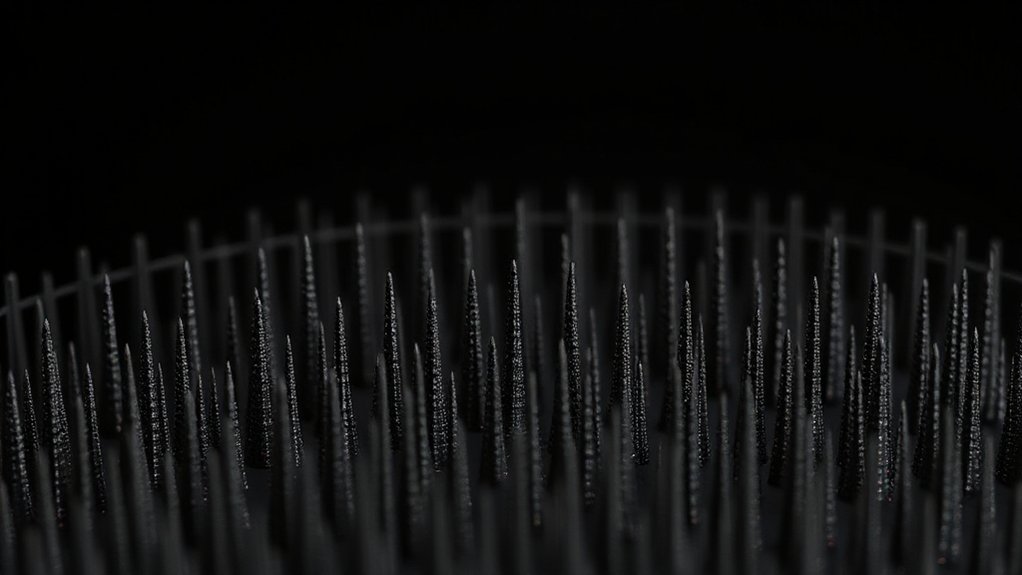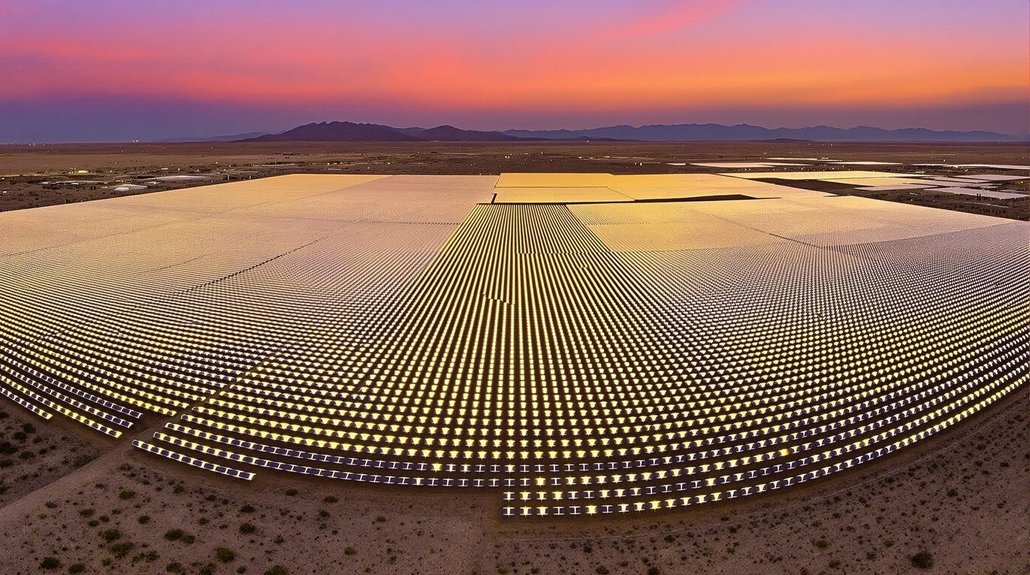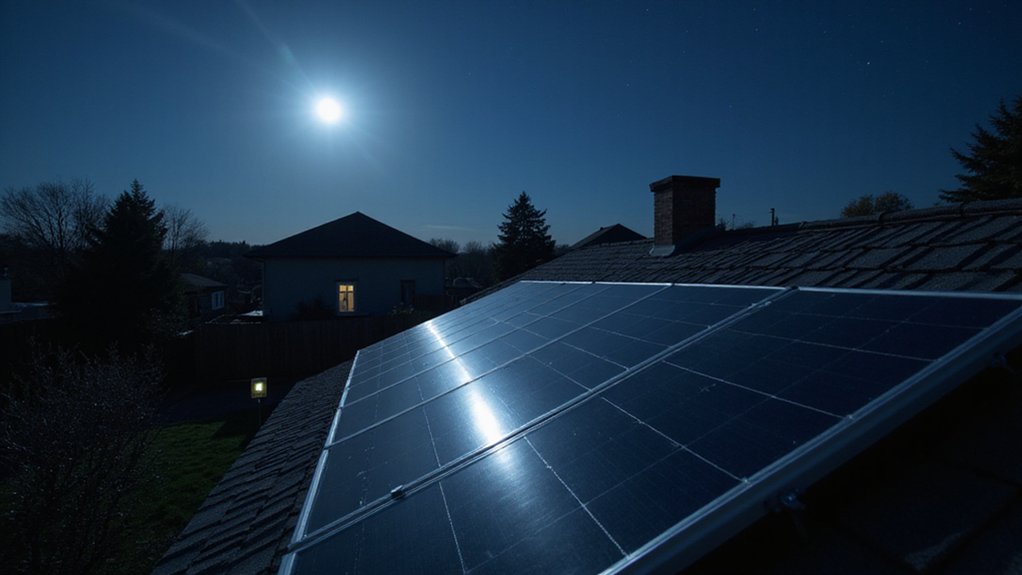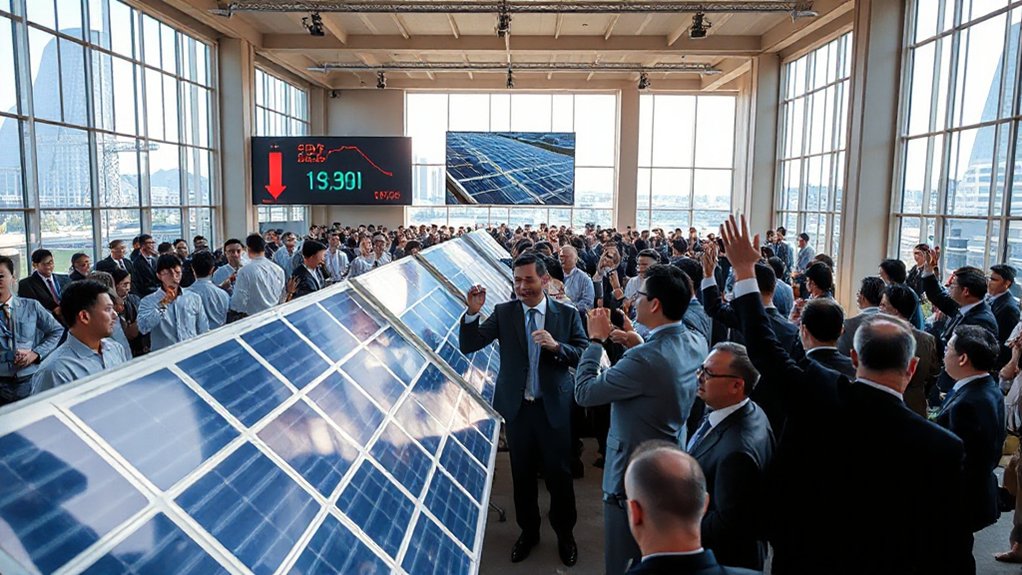A revolution in darkness. Spanish researchers at the University of the Basque Country have created something so black it makes the night sky look washed out. Their copper cobaltate nanoneedles absorb a mind-blowing 99.5% of solar radiation. That’s not a typo. Traditional materials like black silicon manage about 95% absorption. Not bad, but not good enough anymore.
These ultra-black nanoneedles aren’t just showing off. They’re specifically designed for concentrated solar power towers, where hundreds of mirrors focus sunlight onto a small receiver. The blacker the receiver, the more heat captured. More heat equals more power. Simple math.
The magic happens thanks to the nanoneedles’ forest-like structure. Imagine millions of tiny needles trapping light between them, giving photons virtually no chance of escape. The research was conducted by EHU’s Thermophysical Properties of Materials group using specialized high-temperature equipment.
Light enters this microscopic forest and never returns, caught forever in a maze of darkness.
Then they added an aluminum-doped zinc oxide coating. Sounds fancy. It is. This AZO coating pushes absorption to that record-breaking 99.5%.
Carbon nanotubes can hit 99% absorption too, so what’s the big deal? They fall apart in heat. Useless for solar towers that get scorching hot.
These copper cobaltate needles, though? Rock solid at high temperatures. They don’t care about humidity either. No protective layers needed. No performance drop over time. Just reliable, nearly perfect darkness that keeps absorbing day after day after day.
The researchers’ patent-pending technology could make concentrated solar power more viable worldwide. Higher absorption means better efficiency, which means lower costs. This innovation could significantly contribute to the growing solar capacity that reached 760 GW in 2020. Renewable energy getting cheaper? Yes, please.
Manufacturing isn’t some delicate lab process either. These nanoneedles can be made at scale using industrial methods. That’s essential for actual real-world use. Even more impressive is the material’s ability to maintain its performance under wide-angle light conditions, ensuring consistent energy capture throughout the day.
References
- https://interestingengineering.com/energy/ultra-black-nanoneedles-solar-energy
- https://scienceblog.com/ultrablack-nanoneedles-help-solar-towers-hit-99-5-absorption/
- https://techxplore.com/news/2025-10-ultra-black-nanoneedles-absorb-future.html
- https://lifeboat.com/blog/2025/10/ultra-black-nanoneedles-absorb-99-5-of-light-for-future-solar-towers
- https://scienmag.com/ehu-showcases-breakthrough-materials-capable-of-absorbing-99-5-of-light-for-solar-tower-applications/
- https://interestingengineering.com/energy/light-absorption-nanoneedles-solar-towers
- https://www.solardaily.com/reports/Ultrablack_nanoneedles_achieve_new_benchmarks_for_solar_tower_light_absorption_999.html









